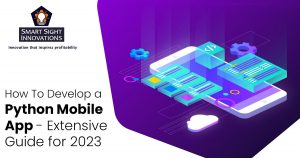 In the present era, using computer programming is crucial. It is impossible to use your smartphone, computer or smart TV without computer programming. Learning the basics might help you gain an advantage in today’s tech-driven environment. Programs you commonly use are embedded into software and application development. The internet browser you use to view a web page, for instance, is regarded as software. Currently, a wide variety of programming languages are available.
In the present era, using computer programming is crucial. It is impossible to use your smartphone, computer or smart TV without computer programming. Learning the basics might help you gain an advantage in today’s tech-driven environment. Programs you commonly use are embedded into software and application development. The internet browser you use to view a web page, for instance, is regarded as software. Currently, a wide variety of programming languages are available.
- If you want to develop a program, you may use C#, C++, D, Java or Swift.
- If you are developing artificial intelligence or related fields that involve creating chatbots, character interactions in video games, etc. think about using AIML, Prolog or Python.
- For creating and maintaining databases, developers may use DBASE, FoxPro, MySQL, or SQL.
- If you are interested in game development, you may consider using DarkBASIC or C.
- For internet and web page development you can use HDML, HTML, JavaScript, Perl, PHP or XML.
- For developing scripts that can increase productivity for your company, you may use AutoHotkey, Awk or Bash.
Both computer programming and the languages used to create software and applications are constantly changing. It is recommended to study the programming language that will best serve your needs or those of others in your field rather than learning the most widely used language if you are just beginning. Python is one of the most admired computer programming languages in the world and is in high demand for creating applications.
What Is Python?
Python is a general-purpose language that can be used for a variety of tasks, such as data science, automation and software and web development. Both developers and non-developers can use Python to create a website, test software or for machine learning. It is a programming language that enables you to work efficiently and successfully integrate systems. Python is a powerful and easy-to-learn language similar to Java, Perl, Ruby, Scheme and other object-oriented programming languages.
Python for Mobile App Development
Python is a fantastic choice for mobile development due to its simple use and readability, which reduces development time. This makes it appropriate for the mobile market as the time to market (the time taken to build and launch an app) is a critical factor in determining the app’s success. Python applications cannot run natively on either iOS or Android since they do not support interpreter-type languages. As a result, developing Python-based applications was not popular before.
However, many Python frameworks for mobile programming evolved over time. These frameworks help the Python application run natively on mobile devices. Two such Python libraries that aid in the quick development of mobile apps in Python are Kivy and BeeWare.
Developing Mobile Apps Using Python
Some of the vital steps to turn your idea into a functioning app using Python include.
1. Schedule the Conditions Necessary
Based on your needs and your ultimate objectives to create a mobile application:
- Identify the specifications for designing the app.
- You should be familiar with some of the technologies you need along with the framework and infrastructure for creating apps.
- You must have a device that is compatible with Python.
- Test your application’s infrastructure with the help of an android-based or iOS-based mobile phone.
- Create the simulation platform for Python mobile programming.
- Make a project folder so that you can use Python object-oriented programs to build mobile applications.
2. Wireframing and Prototyping
Creating user movement and interaction with the application window is a crucial step for Python developers. Making a mobile app paradigm with Python is simple as it is designed for producing clear and efficient designs. Once you have created the interface plan, you should start creating the prototype and decide how the app will proceed from here. This will make it easier to understand the software solution’s functionality and the different screens and plan navigation. To begin with the design for Python language, you can use the custom UI toolkit.
3. Using Python to Code
You can begin working on the backend code for the program development by using the web-based Python automation tool. The interpreter language should be used to create the mobile solution, and a seamless component flow between the graphical user interface (GUI) and the server side of the program should be guaranteed.
You must create the mobile solution using the interpreter language and ensure a consistent component flow between the graphical user interface and the server side of the program. Additionally, you can use libraries for detecting an object while creating an image processing application, such as pytesseract (an optical character recognition tool for Python).
4. Choosing a Framework
A GUI Python framework is required to convert the code into native modules. BeeWare and Kivy are the two top Python frameworks for creating mobile applications. For Android development, you can select BeeWare, while Kivy works well for iOS. This is an important step as you will eventually construct the application for the particular platform. After installing the appropriate package, you can run the code using the framework.
5. Introduce the Program
Once you have run the code using the framework, the next step involves regularly testing the modules because Python supports a test-driven application environment. After it has been tested and optimized, it is now time to release the application onto the relevant app stores.
Some of the popular mobile apps developed using Python are:
- Spotify
- Dropbox
- Uber
- Quora













